Meet Stephanie Brown, a Chicago-based tattoo artist and painter who specializes in perfect replicas of John James Audubon’s prints on human skin.
On John James Audubon's birthday, we celebrate these works and how Brown's unique artistic journey with Birds of America began – and what it means for conservation. Enjoy the gallery below and this special interview with the artist herself.
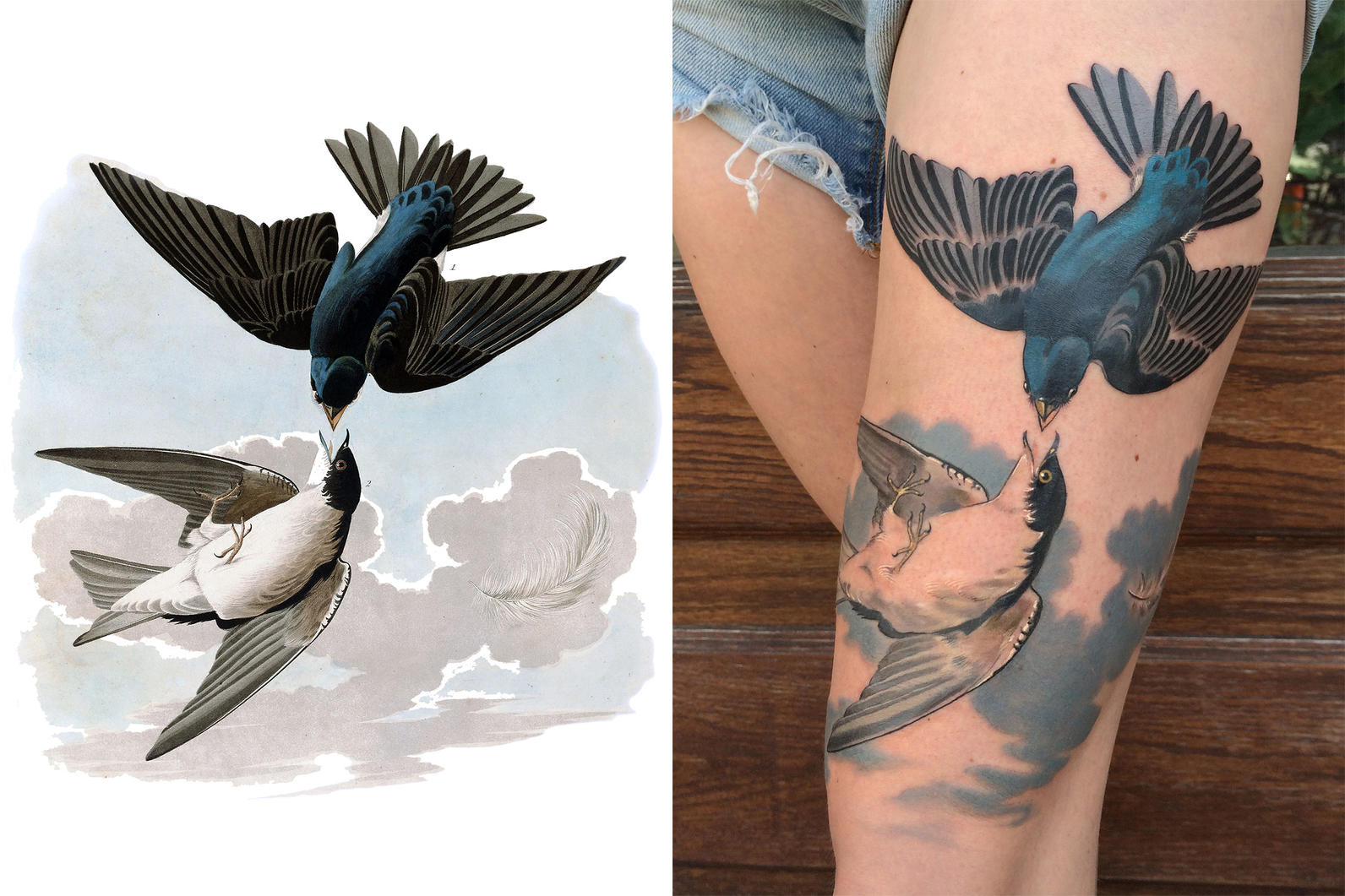
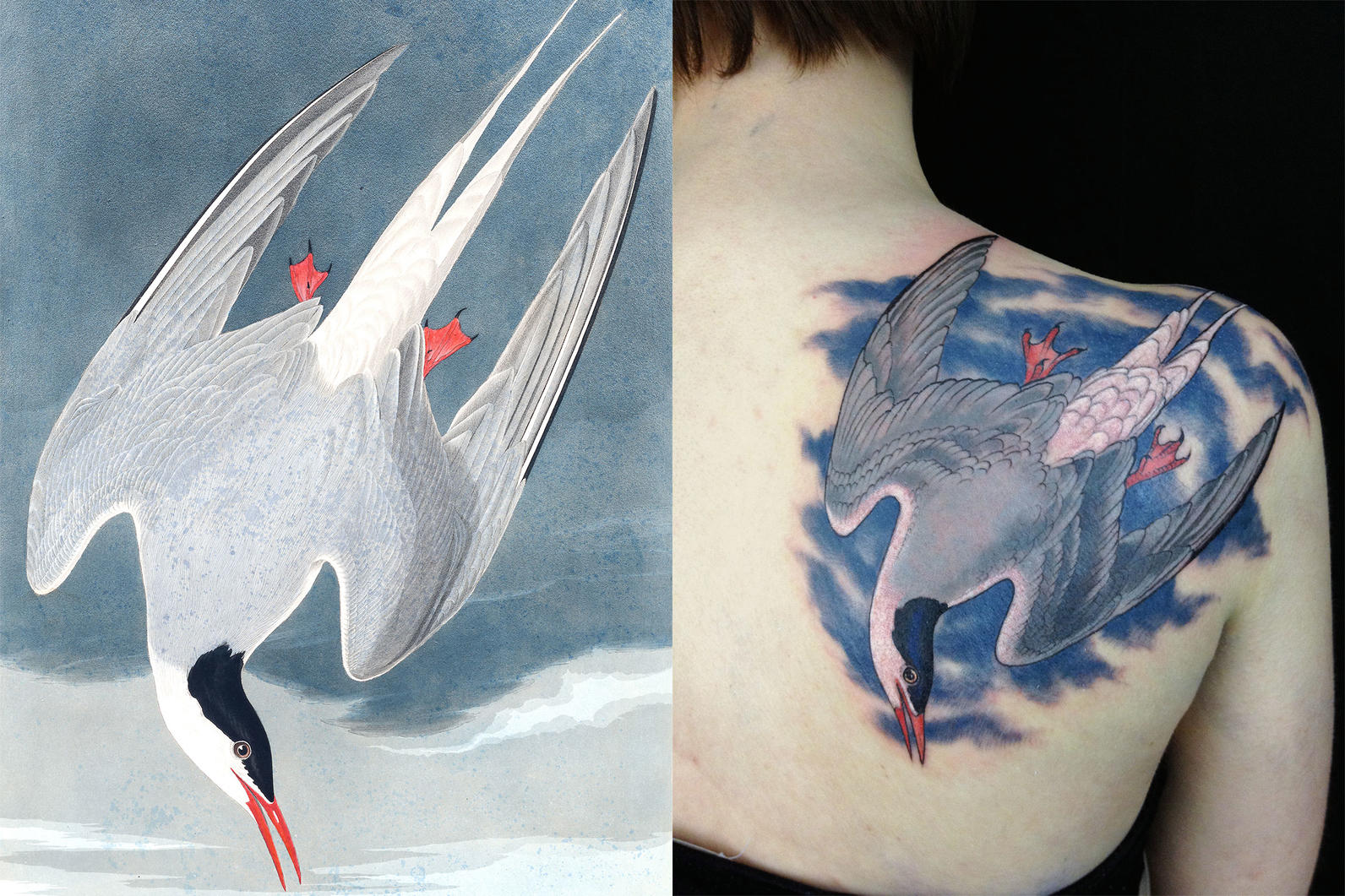
Audubon: How did you become interested in John James Audubon’s artwork?
Brown: I’ve seen Audubon’s illustrations throughout my lifetime because I've always been interested in nature. But I wasn’t aware of the artist himself until much later in college. I was introduced to Birds of America through learning about the history of chromolithography while studying painting and printmaking.
Learning about John James Audubon and the great lengths and effort that went into collecting these specimens and documenting them introduced the wonder and fascination of birds to an audience that would never have seen them otherwise. These drawings and those naturalists’ observations are windows into an entirely different world in the early 20th century, and a world that no longer exists for most of these birds now.
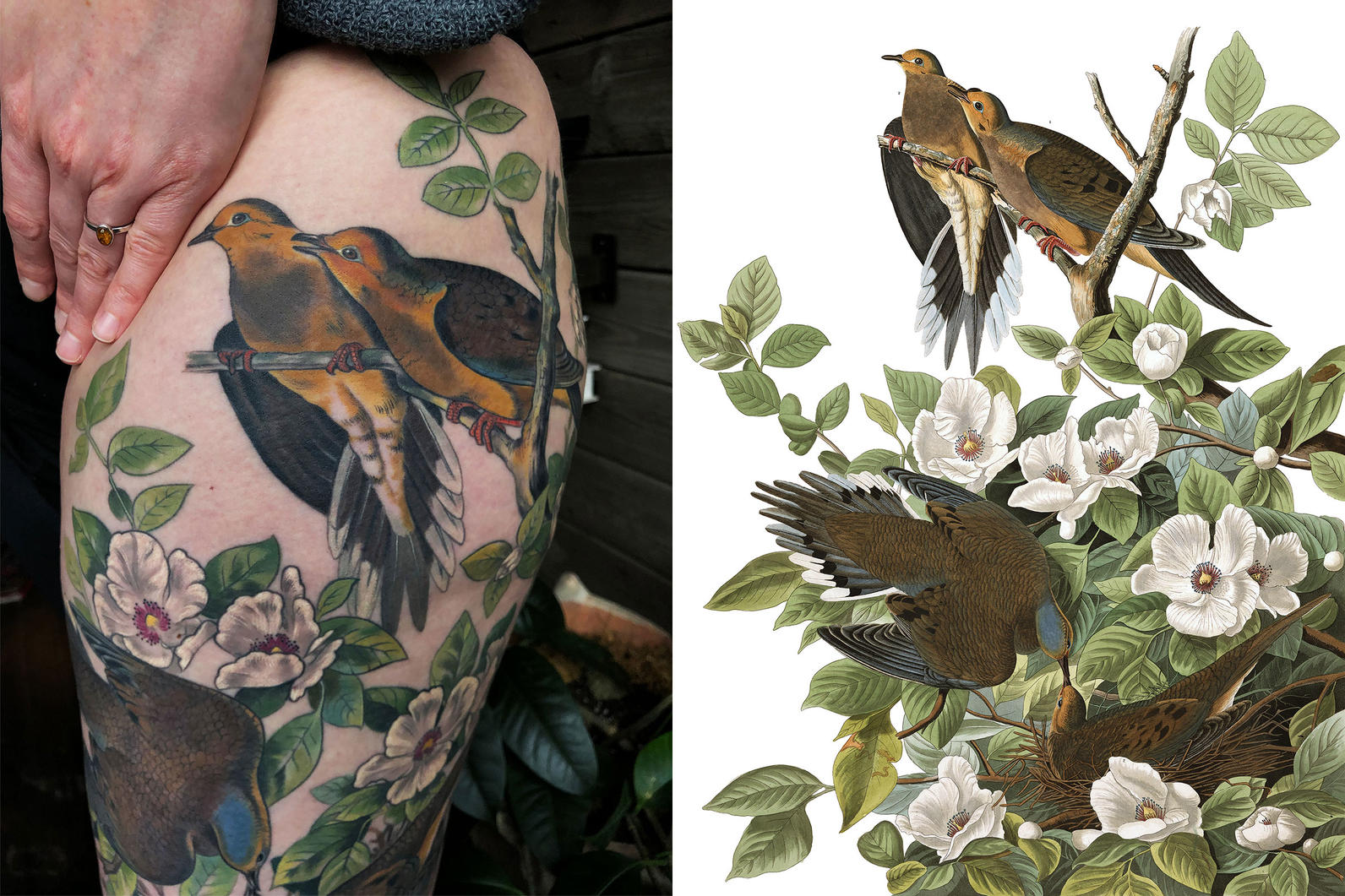
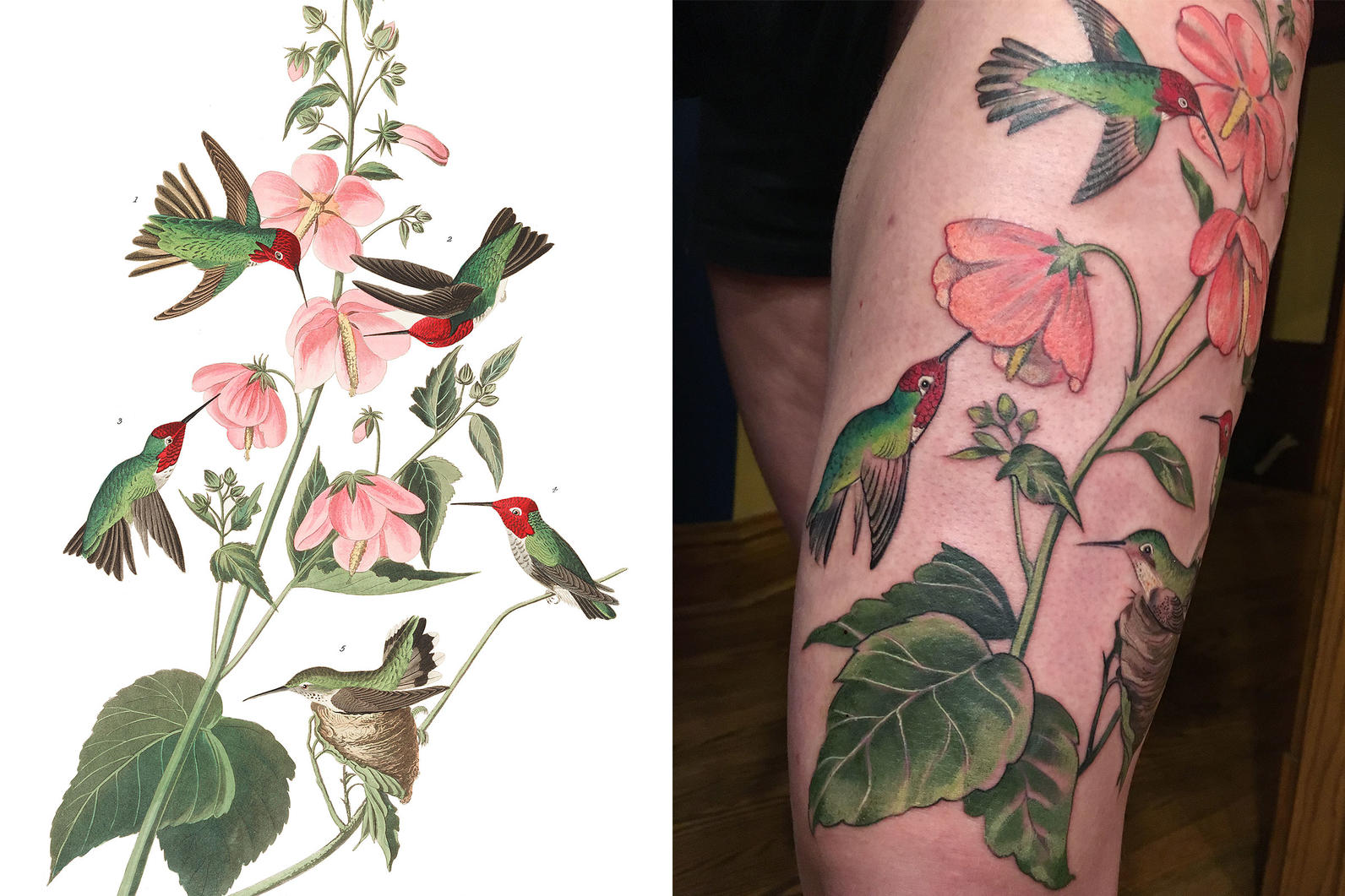
Audubon: What prompted you to begin doing tattoo replicas?
Brown: When someone would request a specific bird for a tattoo, I would inevitably come across Audubon’s Birds of America as reference material. Trying to change it to make it my own design didn’t make sense, since the source material was perfect in itself. Audubon’s illustrations are mesmerizing and the lithographic process is just so tattooable, with solid color with linework detail, that they really didn’t need anything else.
I even saved a few illustrations that I had wanted as tattoos for myself over the years, but never found an artist who didn’t want to redraw them somehow. Doing them on others gave me the opportunity to really examine and learn the illustrations from the ground up - reproducing them in tattooing is almost like digesting them slowly, and savoring them.
I made a rule for myself that I would only do each illustration once, working my way through the catalogue, but that was ridiculously ambitious and I’ve barely made a dent. The large tattoos can take up to 40 hours to finish, and I’ve probably done 20 true replicas - but many tattoos over the years inspired by his work.
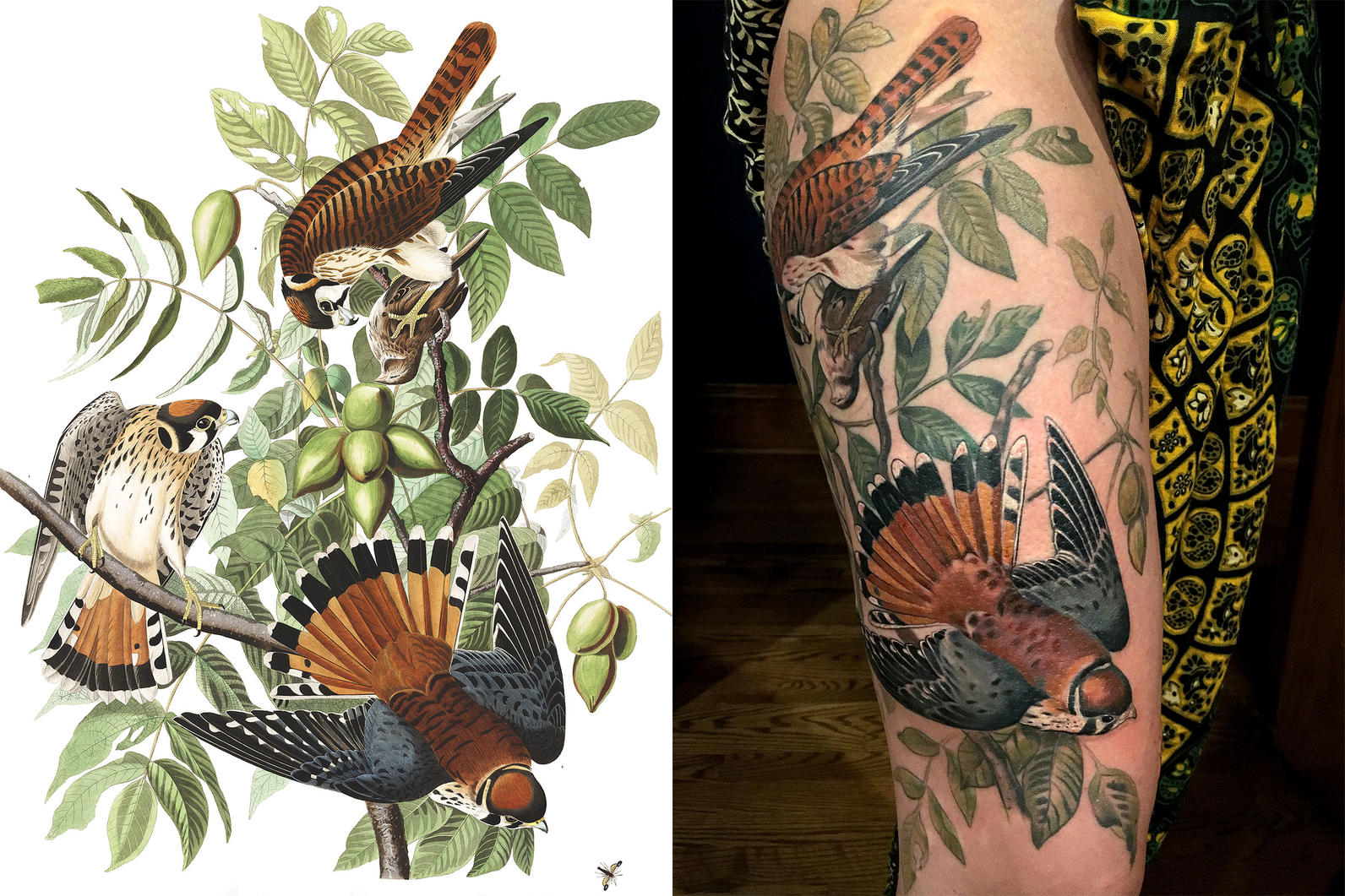
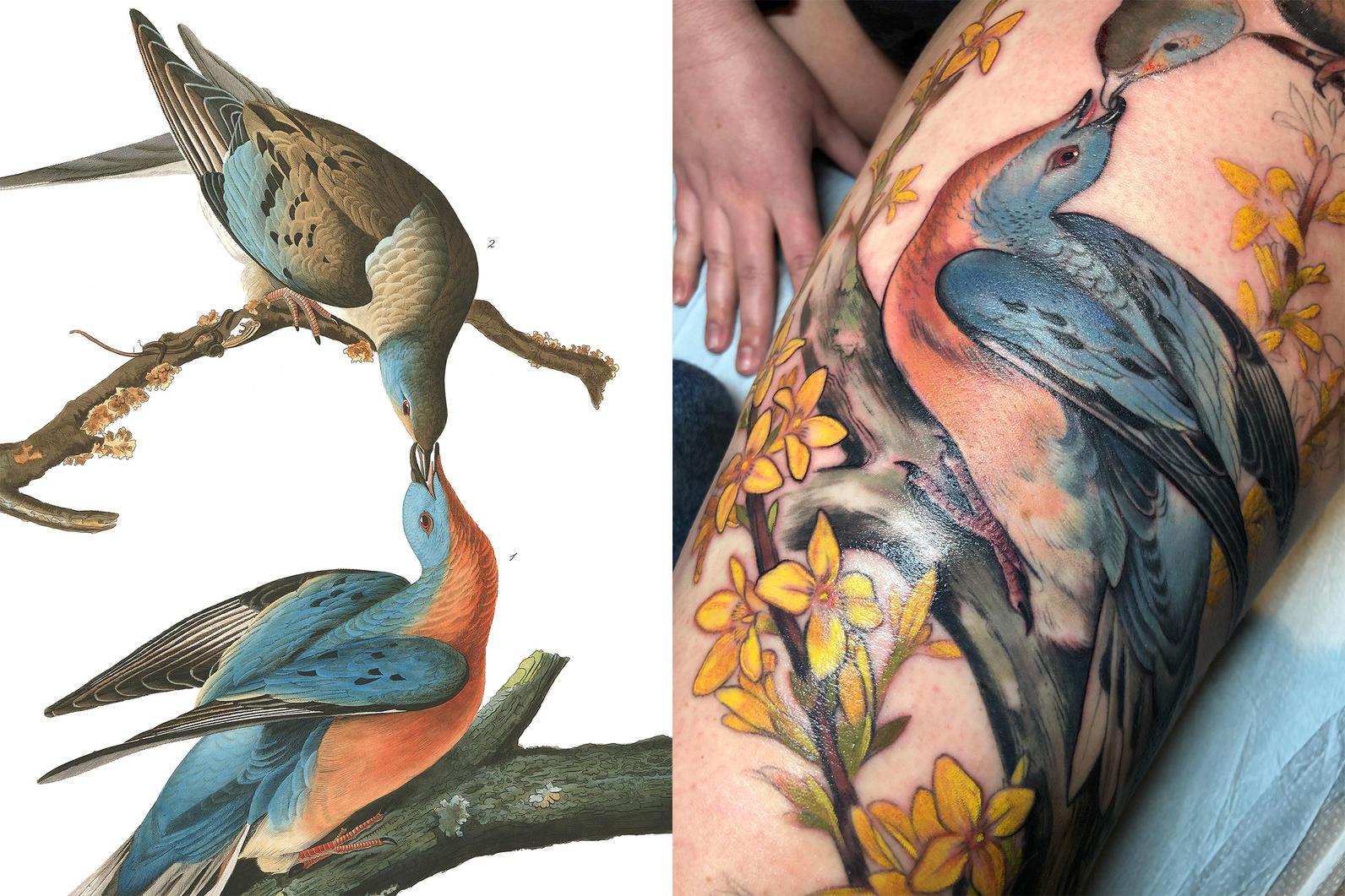
What kinds of people have requested a John James Audubon tattoo?
Brown: All different types of people. Some ask for the Audubon pieces specifically because they’ve loved the illustration, or have a personal connection with the bird featured.
Having a connection with a bird really varies. It can be someone who has a direct relationship as a birder, researcher, or scientist. Or it can be from a personal or spiritual level, as someone who connects with a bird because of it reminds them of a family member or an experience.
Since having social media as a platform, I’ve always been explicit about the origin of the illustrations and give context for the audience where they come from. I’ve also had those who, surprisingly, never thought much about birds but found the illustrations beautiful. Through my tattooing work, they learn about Audubon’s Birds of America.
I live and work in Chicago, which for its size has decent green space and parks. But like most modern city experiences, we live on top of nature and not within it. I personally feel that grief and my work seems to attract people who feel it too.
That feeling of helplessness grows with every news cycle and every passing year.
Choosing a tattoo of a bird seems like a big commitment, but I also think these permanent images of birds at their most idyllic is a way to hold close the idea of the power and wildness of nature in a world where nature is absent.
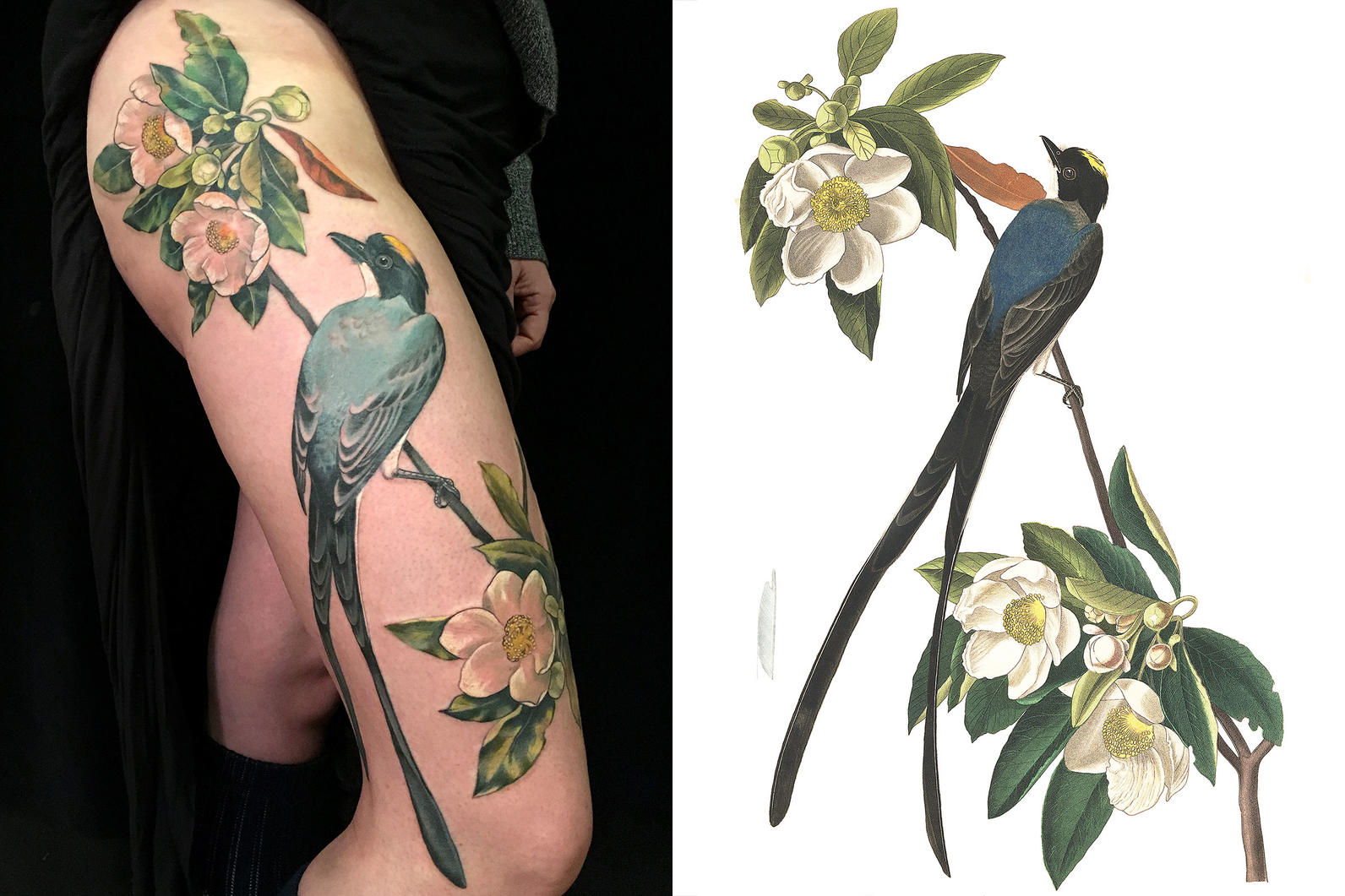
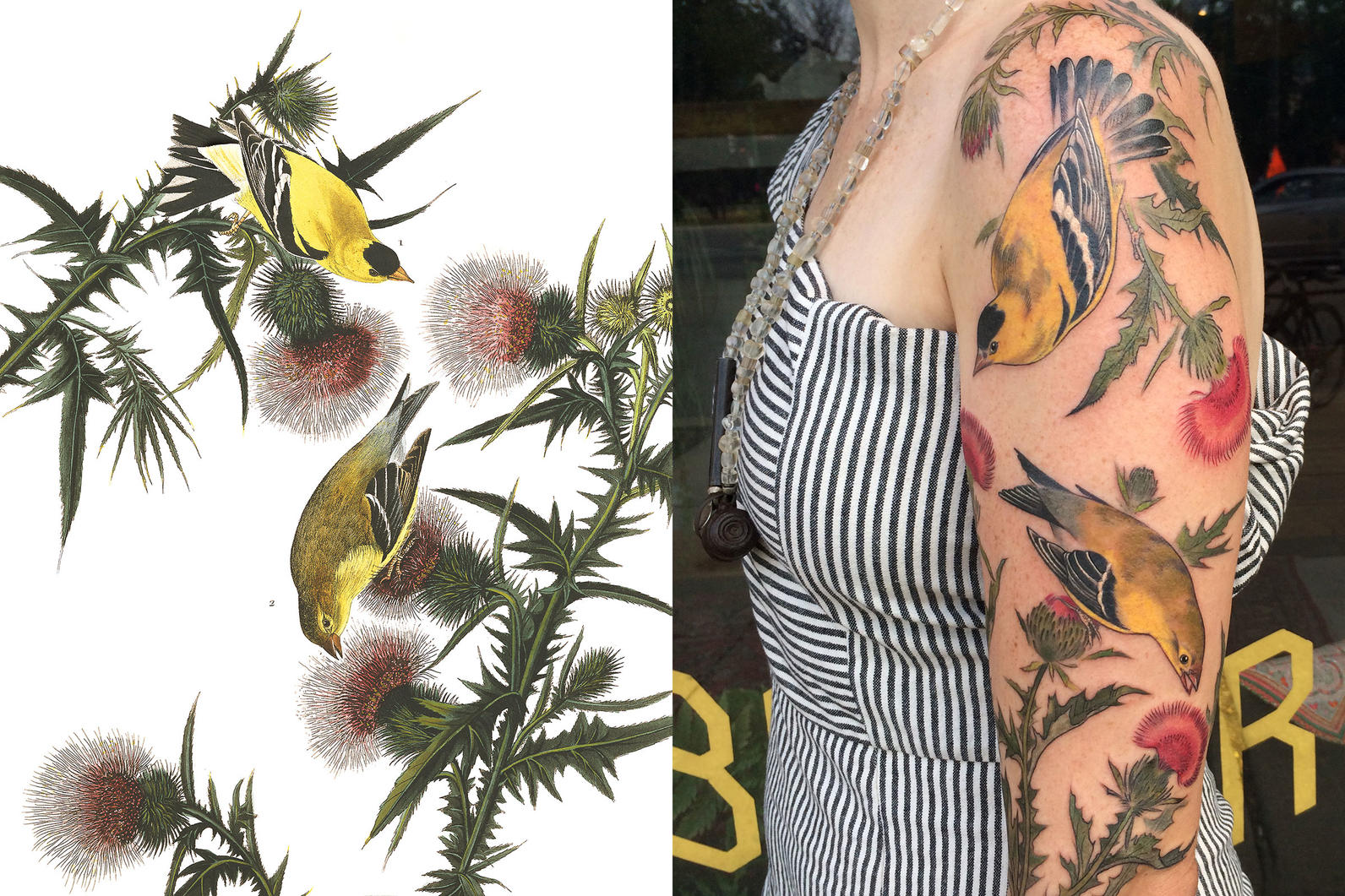
Audubon: What role do you think tattoos play in protecting birds?
Brown: Tattoos don’t have a direct role in protecting birds. But as tattoos become more acceptable and visible on all types of people, there is power in that visibility.
A visible tattoo will always be a conversation starter, whether you want it or not. I hope there is some opportunity for education in those everyday encounters out in the world, even if it’s just sharing the name of the bird.
The appeal and symbolism of birds is universal, and they’ve appeared in tattoos for centuries - and people came to me specifically because of the natural, realistic way I drew them.
I’ve seen the tattoo trend over the last five years move from stylized and generic into using specific species of birds and plants too. Trends are trends but I hear clients who are passionate the environment and the crisis our planet is in. It’s impossible to ignore.
Birds of America was deeply influential in naturalists circles, but also in culture as a whole who had never seen birds displayed in such a way. Similarly, it can seem radical and shocking to etch the image of a bird permanently onto skin.
Audubon: What can the conservation movement learn from tattoo culture?
Brown: There is a huge gap between having a tattoo and proactive conservationism. Not everyone is willing or interested in making that leap, but there is a large group who are.
The people I work with are mostly in the 25-40 age range, who do not have a lot of disposable income or time. However, they find ways to support their communities and the causes that they care about. The incoming generation of conservationists aren’t all going to have academic degrees, or wealth for hefty donations. But they are passionate about the environment and the future world we will be living in.
I think finding meaningful and impactful ways for this group to participate will be the key. It may just look different than the ways we’ve done things before.
Audubon: What do you want to see happen for birds during this time?
Brown: A miracle.
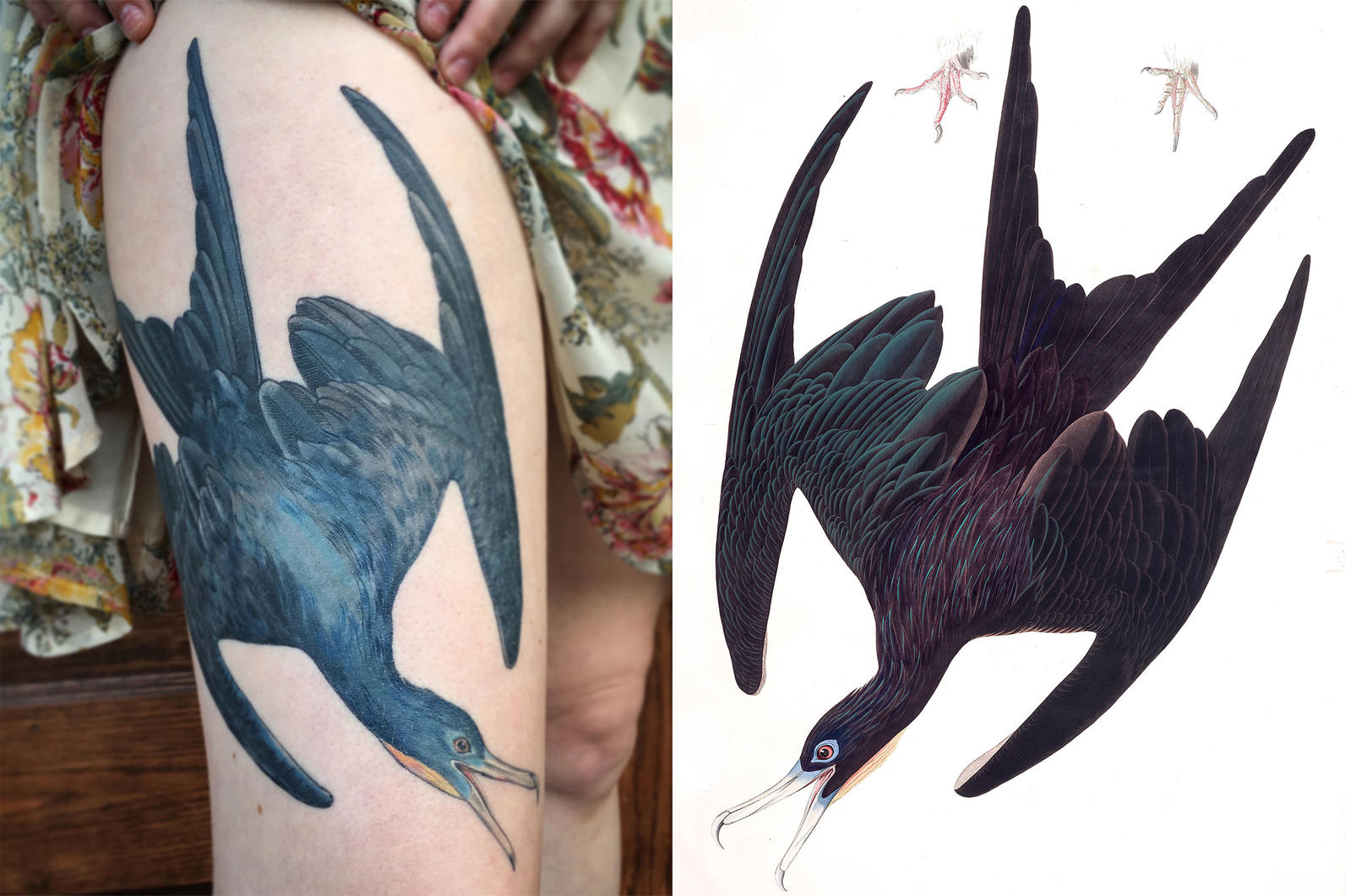
To follow Stephanie Brown's work, visit Instagram @feralcatbox and http://feralcatbox.com



